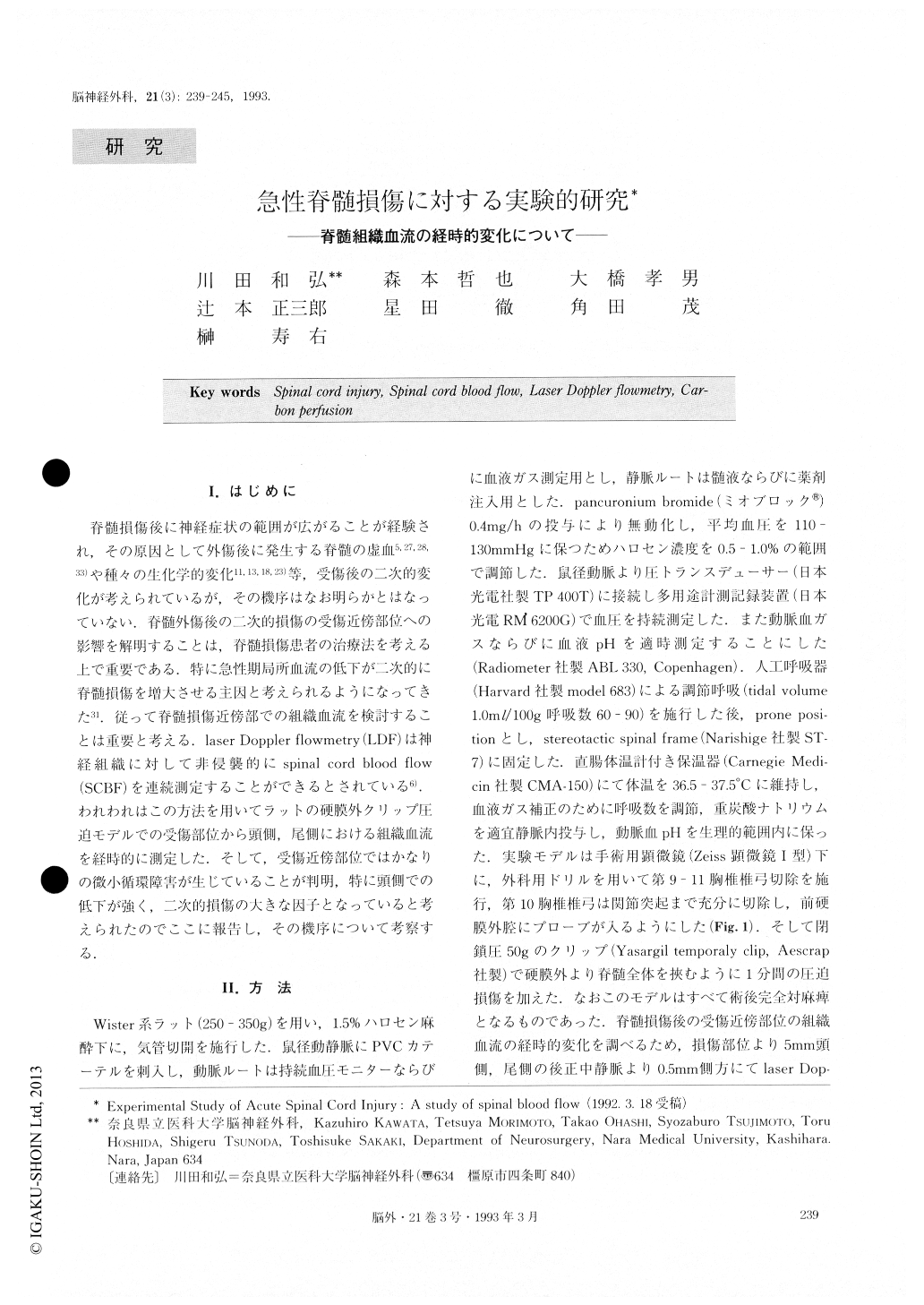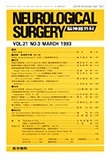Japanese
English
- 有料閲覧
- Abstract 文献概要
- 1ページ目 Look Inside
I.はじめに
脊髄損傷後に神経症状の範囲が広がることが経験され,その原因として外傷後に発生する脊髄の虚血5,27,28,33)や種々の生化学的変化11,13,18,23)等,受傷後の二次的変化が考えられているが,その機序はなお明らかとはなっていない.脊髄外傷後の二次的損傷の受傷近傍部位への影響を解明することは,脊髄損傷患者の治療法を考える上で重要である.特に急性期局所血流の低下が二次的に脊髄損傷を増大させる主因と考えられるようになってきた31.従って脊髄損傷近傍部での組織血流を検討することは重要と考える.laser Doppler flowmetry(LDF)は神経組織に対して非侵襲的にSpinal cord blood flow(SCBF)を連続測定することができるとされている6).われわれはこの方法を用いてラットの硬膜外クリップ圧迫モデルでの受傷部位から頭側,尾側における組織血流を経時的に測定した.そして,受傷近傍部位ではかなりの微小循環障害が生じていることが判明,特に頭側での低下が強く,二次的損傷の大きな因子となっていると考えられたのでここに報告し,その機序について考察する.
It is well known that the worsening of neurological findings after spinal cord injury is due to the secondaryprogression of pathological changes which may be caused by spinal cord blood flow disturbance. We mea-sured spinal blood flow of 5mm rostrally and caudally distant portions from the injured point, using the laser Doppler flowmeter experimentally. Forty rats were used. Ten of these were used as a control group. And thir-ty animals were injured at the level of the tenth thoracic cord with a 50g epidural one minute compression method and measured continuously from 30 minutes before the injury to 6 hours after the injury. Twenty two surviving animals were evaluated. In the control group, spinal blood flow was stable. But in the injured group, spinal blood flow dropped by 30.6+9.8% on the rostral side and 37.3+17.6% on the caudal side in comparison with the resting value soon after the injury. Although the flow im-proved to 89.3+11.1 and 71.3+17.8% respectively 15 mi-nutes later, it dropped again gradually and reached 42.8 +14.1 and 66.2+16.4% respectively 6 hours after the in-jury had been inflicted. Lastly, in the animals, carbon perfusion was performed through the left ventricle. The normal figured vasculature in the preparation of the in-jured and measured portion was calculated with a micro-computer imaging analyzer and compared with control groups. The number of the normal vessels was signific-antly more abundant on the caudal side than on the ros-tral side (p<0.01).
From these our experimental results, it is suggested that spinal blood flow disturbances which occur after spinal cord injury and are more remarkable on the rostral side, may play an important role in the secondary neuro-logical worsening of the condition of patients who have undergone spinal cord injury.

Copyright © 1993, Igaku-Shoin Ltd. All rights reserved.


